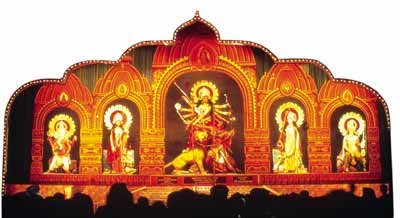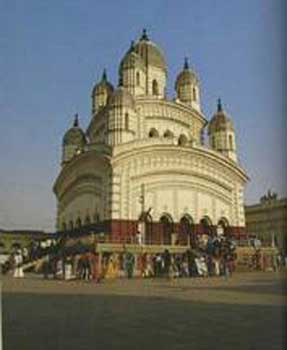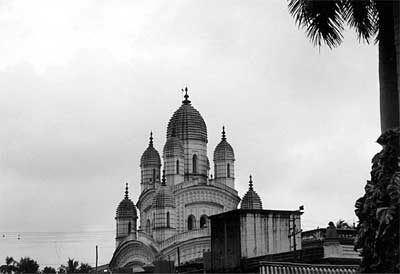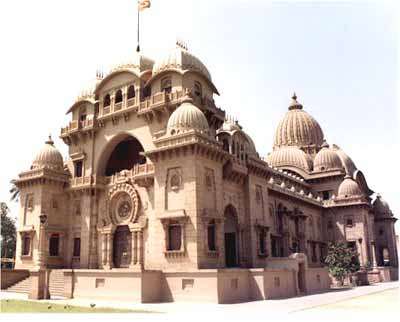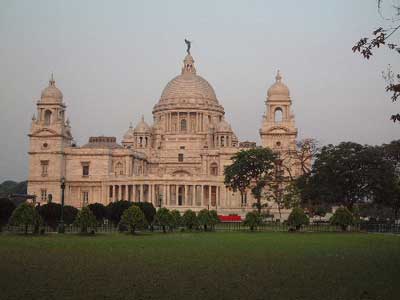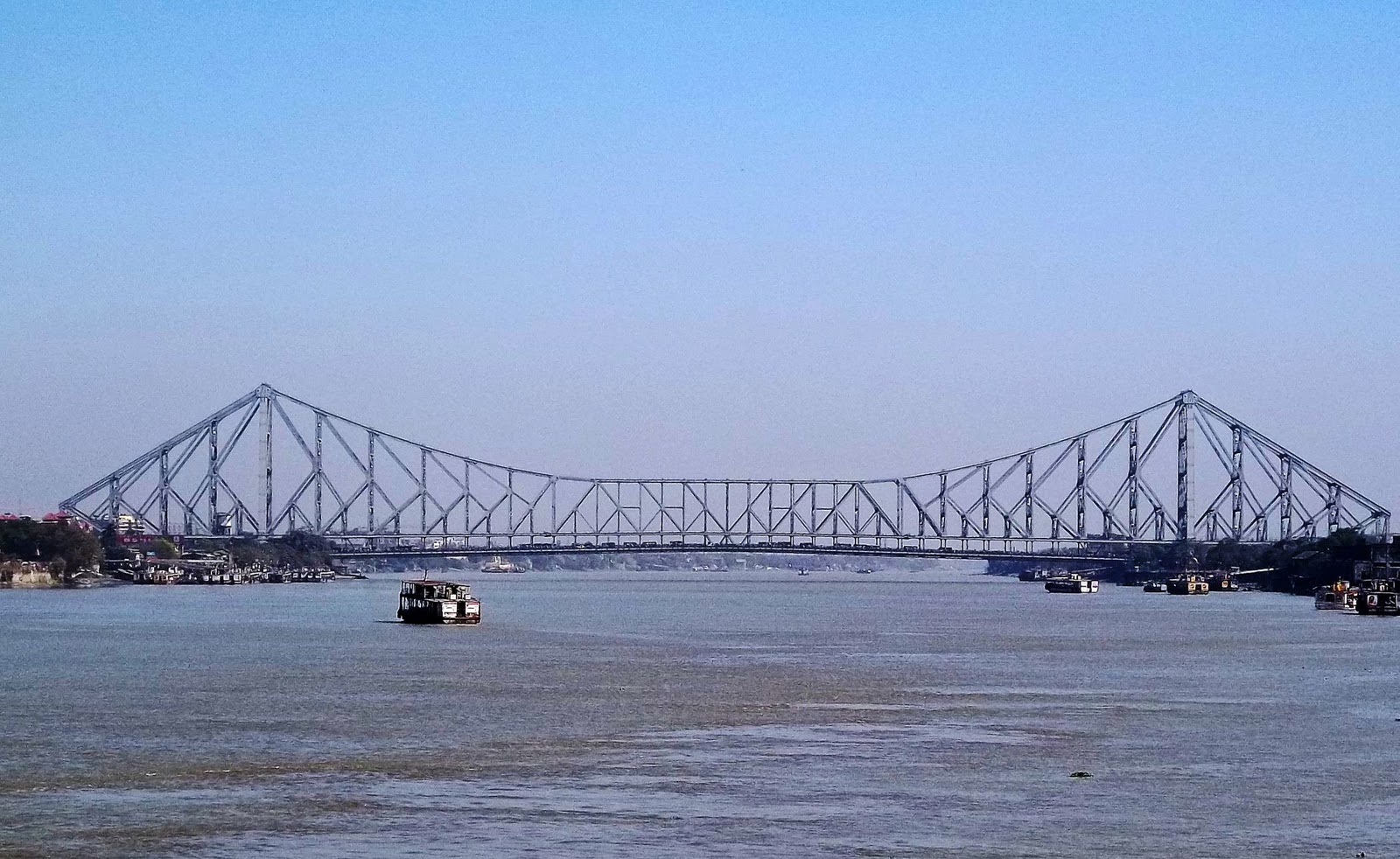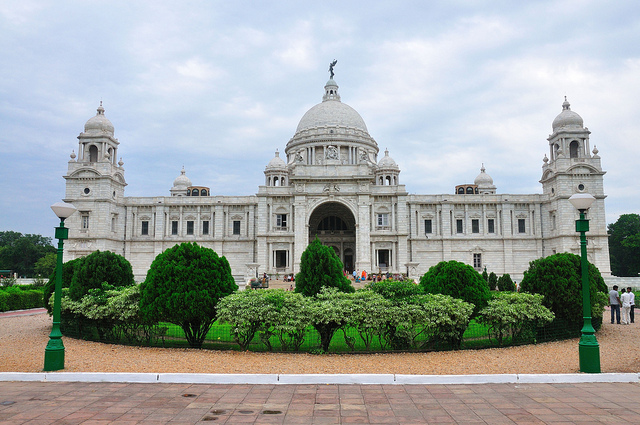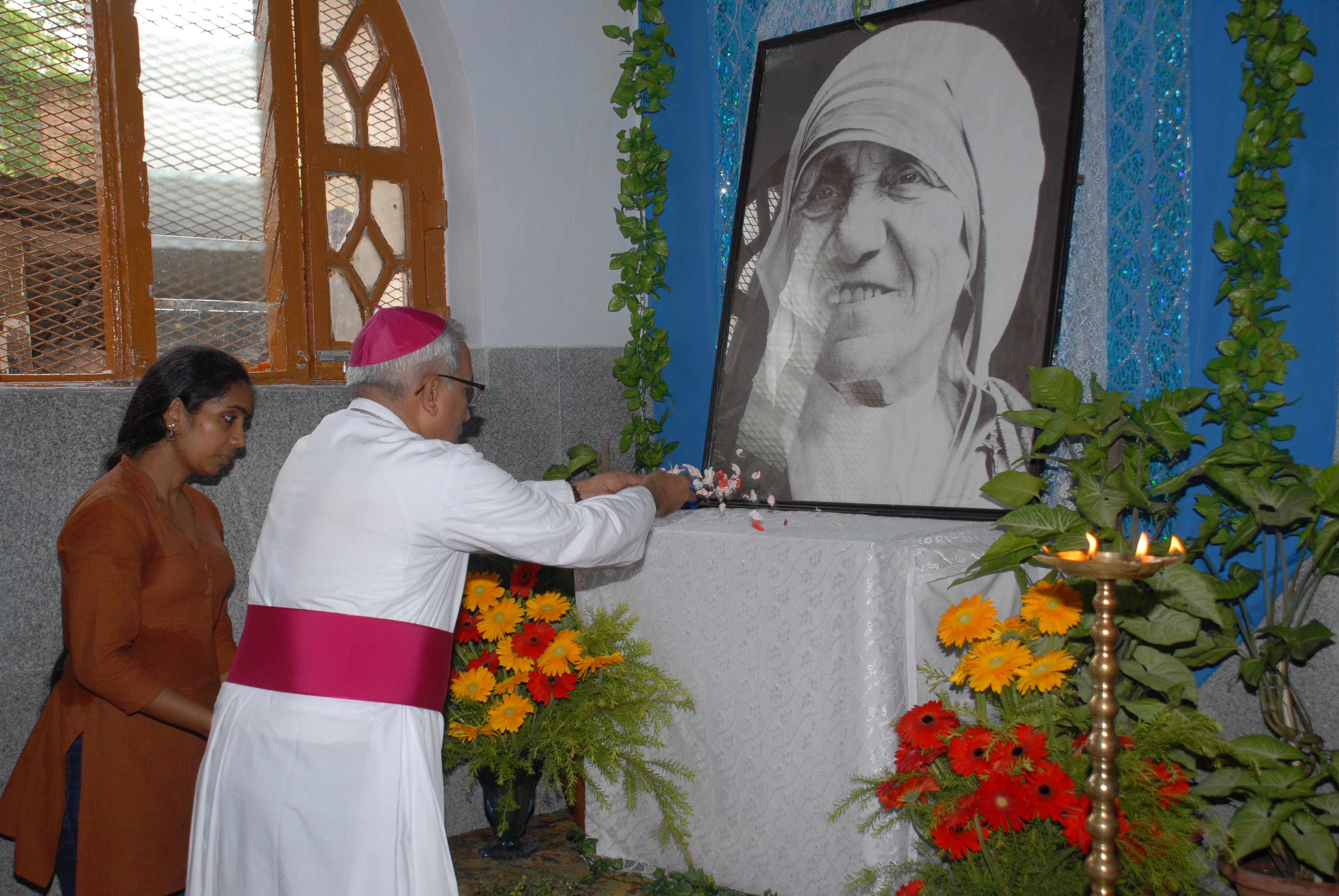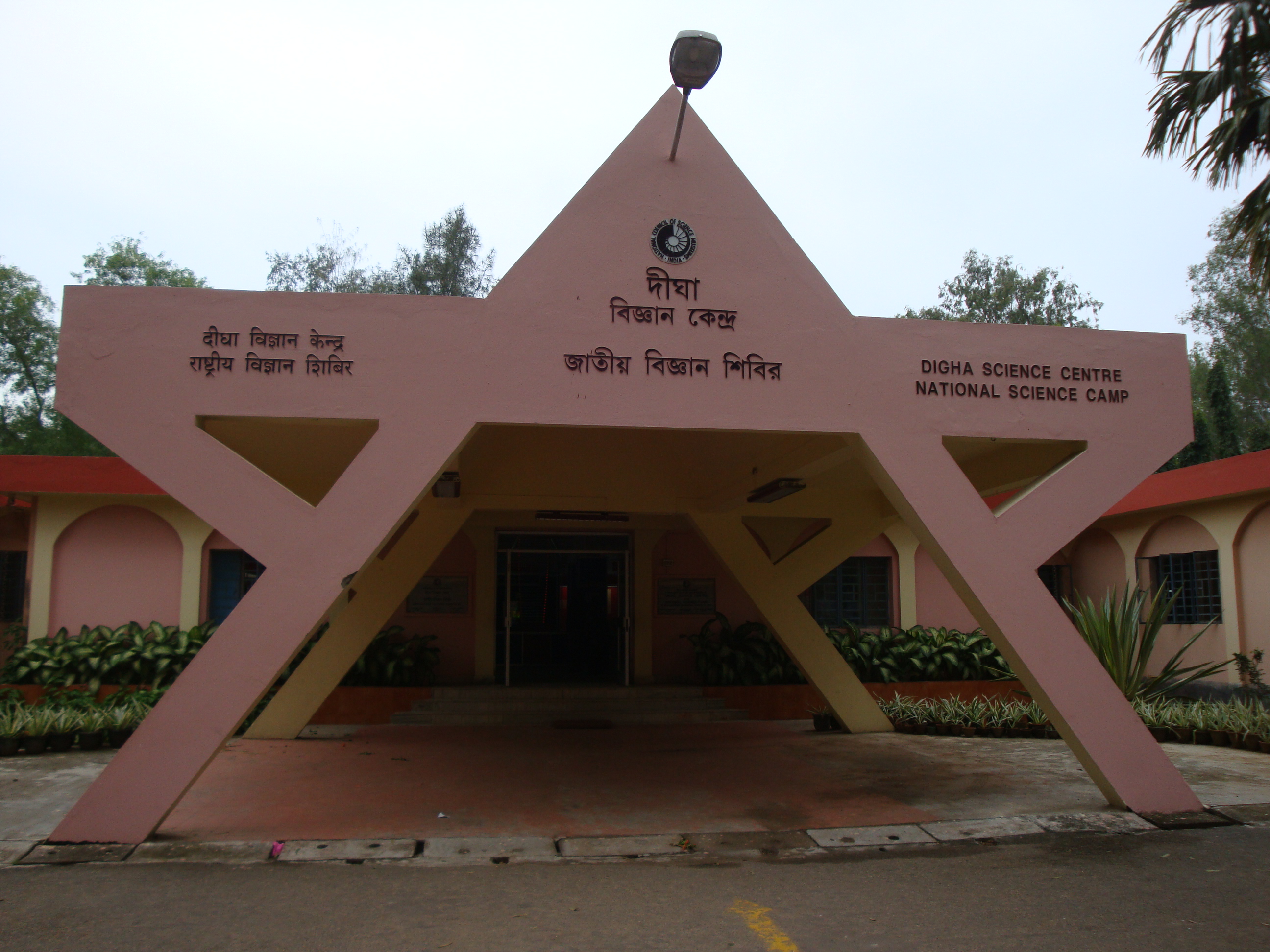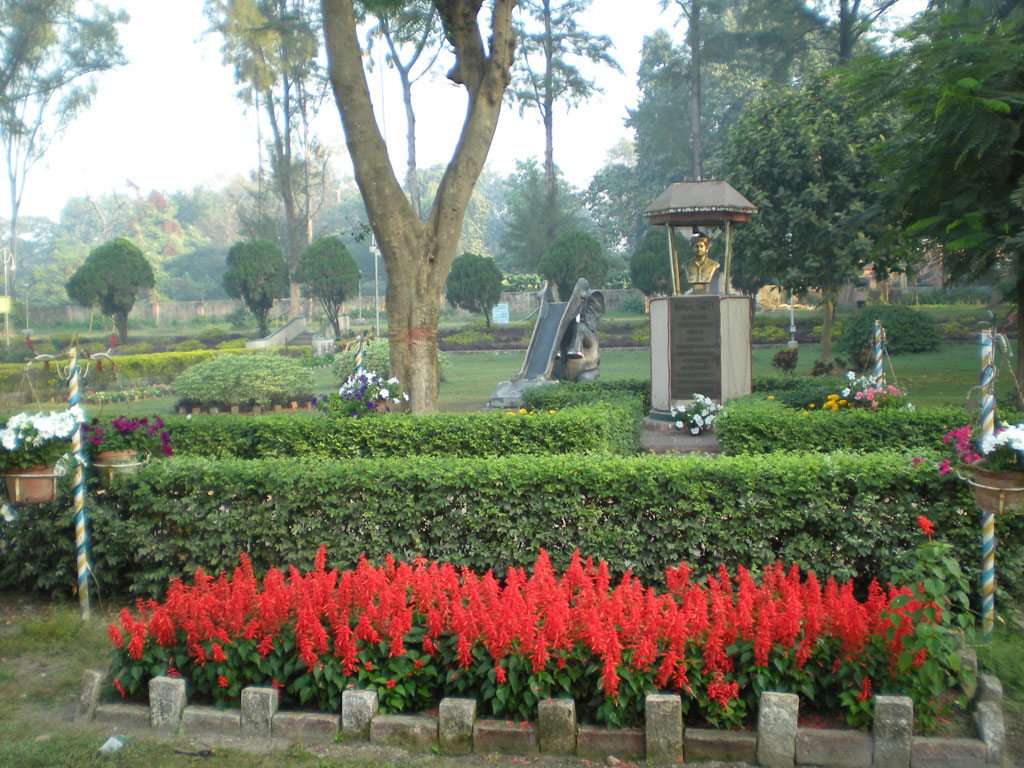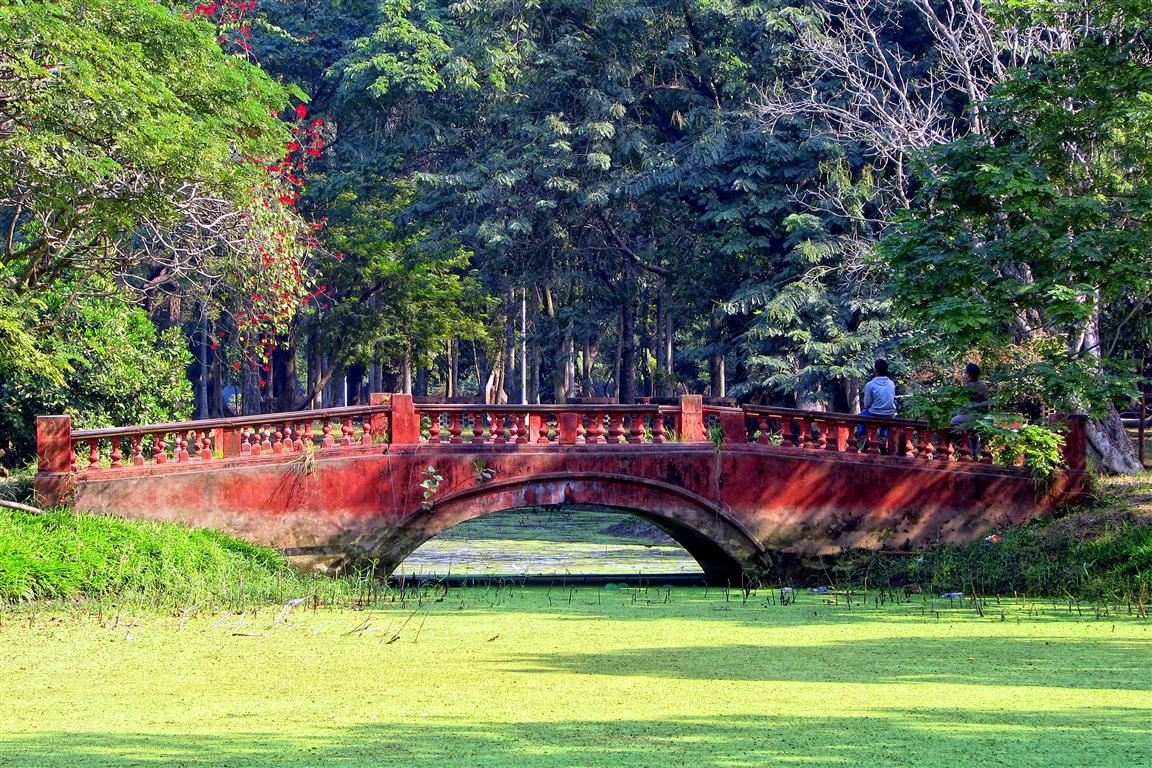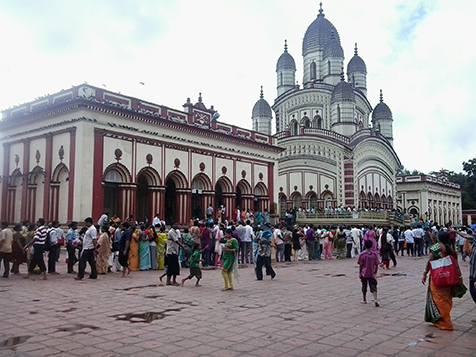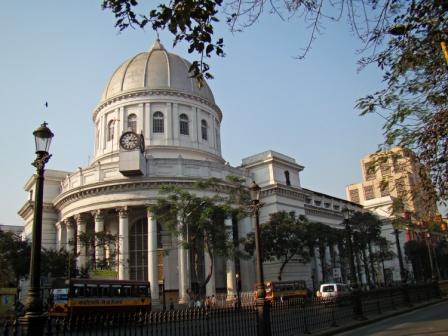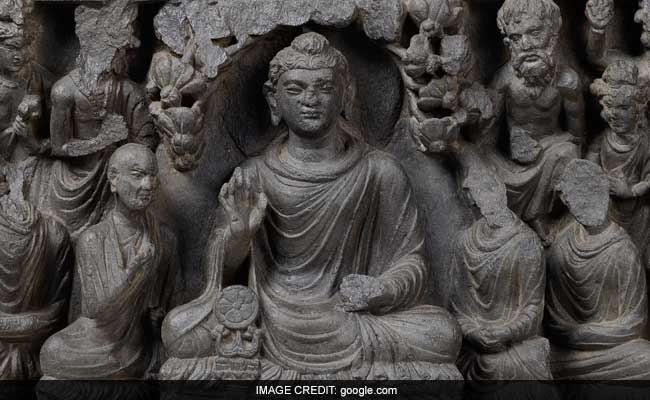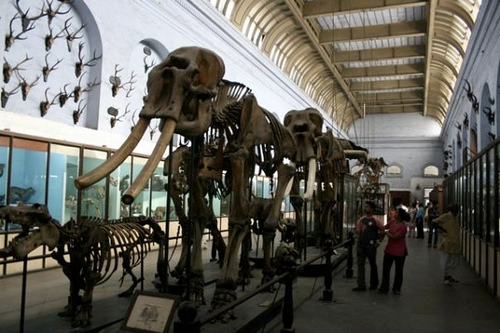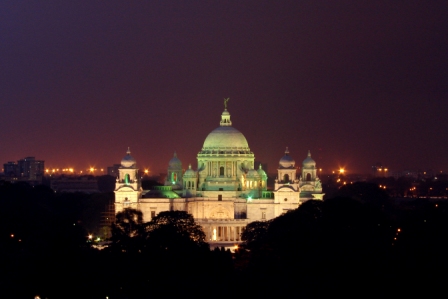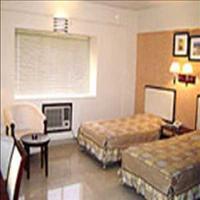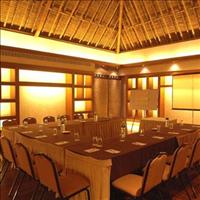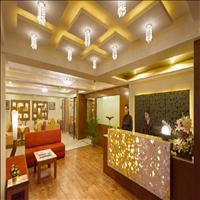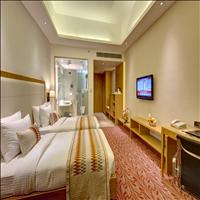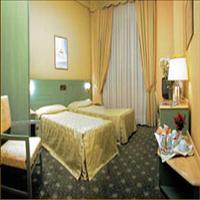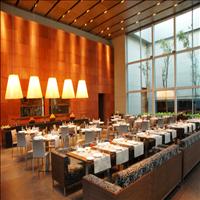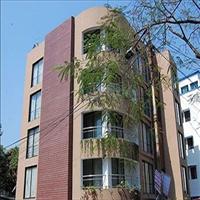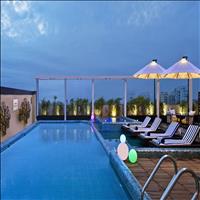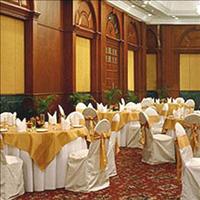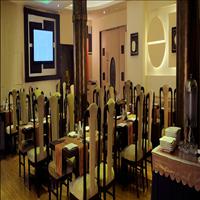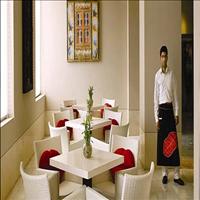Kolkata
The City of Joy
General Information
Common Name: Calcutta
Other Name: Calcutta, District: South 24 Parganas, State: West Bengal, India
Area: 1380.12 Sq. Km.
Languages Spoken: Bengali, Hindi, Urdu and English.
Long Distance Code: +91-33
Importance: The largest city of India and the capital of West Bengal
Best Time to Visit: October to March and Specifically during the Durgapuja festivities in October
International Access: Netaji Subhash Chandra Bose International Airport
Description
A city of historical interest, archaeological splendor and social significance, the hardly 300 year old Calcutta throbs with amazing life. The city of Joy is the country's largest city and one of the most populous in the world. Here are gathered India's finest artists and musicians, scholars and poets and the most desperate poverty stricken slums. A city, which has adapted to the modern trends and techniques of the world, but also has kept the Bengali tradition alive. Calcutta is called the soul of India. The contrasts between the rich and the poor, the educated and the ignorant, the old and the new are more evident here, than any other metropolis of India. <br />Kolkata, once a mere village on the bank of the Ganges, full of small lakes and mosquitoes it became one of the important ports and the second city only after London. Although the name Kalikata has been mentioned in the rent-roll of the Great Mughal emperor Akbar, the history of this city can be traced back to only 300 years when the visionary from the east India Company, Job Charnock landed here. The source of the name Kolkata is still confusing. The east India Company bought the Zamindari of three islands, Sutanuti, Kalikata and Govindapur from the Subarna Chowdhury family. The union of these three villages came to be known as Calcutta. Either the name has been derived from the village Kalikata or from the name Kali Kotha, means abode of Goddess Kali. Kolkata might have been the form of that name to which the British addressed as Calcutta.<br />Nonetheless Calcutta went on to become a big city and glorious capital of the Indian British Empire. <br />Today Kolkata bustles with life carrying the Bengali traditions and culture. A metropolis with a Bengali flavour. The only metro railway in India is present in Kolkata but also the age old tram and rickshaws pulled by m en. This contradiction, smile in pathetic conditions and in life has allured the visitors. Calcutta is a home to the refugees from Bangladesh and other poverty stricken regions around the state of West Bengal. One has to salute the indigenous spirit of the people of Kolkata, fighting the odds and living through, making it a city of Joy. <br />Its rich cultural background is evident from the plays and street theatres that can be witnessed. In its three hundred years of existence as a city, Kolkata has been variously described as an example of the triumph of urban civilization and a disastrous result of unchecked urbanization. <br />It is a city overflowing with various types of goods. However Kolkata is famous for its beautiful cotton sarees called the Tant and leather purses. Kolkata is also famous for its sweets. The sweet shops are always crowded and equally crowded are the fish markets and the flower markets. Kolkata is always a vibrant city. At least once a month the city undergoes the call of Strike when all the shops, offices and schools are closed. But the people still smile, busy celebrating some or the other occasion or discussing about the latest drama, political situation or songs over a cup of tea. Despite all the odds the people of Kolkata can not migrate to any other city and can not imagine Kolkata without these odds either. This is what lets out the secret of Kolkata.Location
The capital of West Bengal, Calcutta, renamed recently as Kolkata, lies on the Hoogly, distributaries of the Ganges. Its close proximity to the river and sea developed it as a major commercial center.<br />Kolkata has a typical tropical climate, humid and hot for the most of the time of the year. Kolkata however receives a moderate rainfall and light woolens are needed during the peak winters of December and January.Climate
Situated on the bank of the River Ganga, Kolkata, experiences a humid climate. It rains heavily during the monsoon and the winters are the most pleasant season of the year.
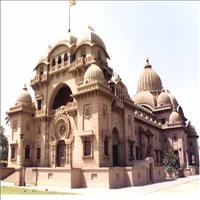 Kolkata has always been the home for various religions and hence one can find different religious structures here, worth a visit.\r\nTemples: The Belur Math and the Ramakrishna temple, The Dakshineshwar temple, The Kalighat.\r\nChurches: St. John's Church, St. Paul's Cathedral\r\nThe Nakhoda Mosque\r\nParshwanath Jain Temple\r\n
Kolkata has always been the home for various religions and hence one can find different religious structures here, worth a visit.\r\nTemples: The Belur Math and the Ramakrishna temple, The Dakshineshwar temple, The Kalighat.\r\nChurches: St. John's Church, St. Paul's Cathedral\r\nThe Nakhoda Mosque\r\nParshwanath Jain Temple\r\n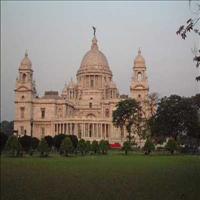 The Asiatic Society, The Victoria Memorial, Fort William, Raj Bhavan, The Shahid Minar, Writers' Building, The Howrah Bridge or the Rabindra Setu, The Vidyasagar Setu.
The Asiatic Society, The Victoria Memorial, Fort William, Raj Bhavan, The Shahid Minar, Writers' Building, The Howrah Bridge or the Rabindra Setu, The Vidyasagar Setu.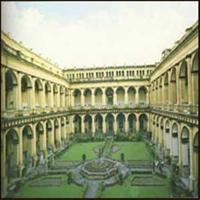 The Indian Museum, Nehru Children's Museum, The National Library, Kolkata Museum, Science museum, The Botanical Gardens, The Zoological Gardens, The Jorashanko Thakur Bari.
The Indian Museum, Nehru Children's Museum, The National Library, Kolkata Museum, Science museum, The Botanical Gardens, The Zoological Gardens, The Jorashanko Thakur Bari. Run by the Missions of Charity this place is very close to the Kalighat Temple. It was here that Nobel laureate Mother Teresa preached and proved that love for human kind is the only solace to mankind. The caring, unstinting help extended by this iron willed yet gentle lady to the poor, homeless, orphan and the sick is commendable. The mission carries forward the message of love at this place.
Run by the Missions of Charity this place is very close to the Kalighat Temple. It was here that Nobel laureate Mother Teresa preached and proved that love for human kind is the only solace to mankind. The caring, unstinting help extended by this iron willed yet gentle lady to the poor, homeless, orphan and the sick is commendable. The mission carries forward the message of love at this place. The Science City situated in the eastern part of Kolkata is a great gateway for young and old alike with lots of fun and education. Asia's only venture of the kind, here science and technology, have been put to ingenious use to explain scientific principles. Natural phenomena such as earthquakes, quicksand and tornadoes, interior of a volcano are some of the many displays. Travel through time and outer space in the time Machine transports visitors across past and future with sights and sounds. Another main attraction is the Space Theatre.
The Science City situated in the eastern part of Kolkata is a great gateway for young and old alike with lots of fun and education. Asia's only venture of the kind, here science and technology, have been put to ingenious use to explain scientific principles. Natural phenomena such as earthquakes, quicksand and tornadoes, interior of a volcano are some of the many displays. Travel through time and outer space in the time Machine transports visitors across past and future with sights and sounds. Another main attraction is the Space Theatre.Around 50 kms south of Kolkata is the old harbour known as the Diamond Harbour. It is a popular excursion spot where Ganges bends south on its way to sea becoming wider and deeper allowing big ships to dock. Originally known as Hajipur, it was renamed Diamond Harbour by the British and was a stronghold of Portuguese pirates. Launches run from here to Sagar Island or Sagardweep. People visit this place to see big vessels anchored. Sagardweep is at the mouth of the Hooghly and the island is considered to be the point where the Ganges joins the sea. In mid-January, a great three-day bathing festival the Ganga Sagar fair takes place here. \r\nVery near is Joynagar, traditionally known for its moya, a sweet made of puffed rice and jaggery, has recently attracted archaeological interest. Visitors can see the manuscripts at Kalidas Dutta's collection at Joynagar, along with terracotta figurines and black stone images of Buddha, Mahavir and Vishnu, belonging to the 11th and 12th centuries.
 The nearest sea beach to Kolkata is Digha, around 185 kms south of Kolkata. This beautiful virgin beach takes a six hours journey from Kolkata and has all the facilities for an overnight stay. Digha is very close to Orissa border. The seven kilometer long beach is being developed as a major tourist spot. A perfect place for a sea lover, Shankarpur, another virgin beach 10 km from Digha offers the best of sea holiday. Just eight kilometer from Digha is the Chandaneshwar Siva Temple across the border in Orissa worth a visit.
The nearest sea beach to Kolkata is Digha, around 185 kms south of Kolkata. This beautiful virgin beach takes a six hours journey from Kolkata and has all the facilities for an overnight stay. Digha is very close to Orissa border. The seven kilometer long beach is being developed as a major tourist spot. A perfect place for a sea lover, Shankarpur, another virgin beach 10 km from Digha offers the best of sea holiday. Just eight kilometer from Digha is the Chandaneshwar Siva Temple across the border in Orissa worth a visit. Today famous for its artisans making beautiful clay figurines, the small township of Chandannagor was a famous French trading post till recently. It was handed over to India along with Pondicherry in 1951. Hardly 40 kms from Kolkata this enchanting town still carries the aura of French settlement with its heritage French buildings like the Clock Tower. Nearby is the Octagonal Dutch Church and settlement at Chinsurah, 45 kms away. The Hooghly Imambara and the Portuguese monastery and church at Bandel, 48 kms from Kolkata, are places worth visiting. The Hanseshwari temple with unusual carvings and unique structure and the Basudeva temple located at Bansberia are 47 kms from Kolkata.
Today famous for its artisans making beautiful clay figurines, the small township of Chandannagor was a famous French trading post till recently. It was handed over to India along with Pondicherry in 1951. Hardly 40 kms from Kolkata this enchanting town still carries the aura of French settlement with its heritage French buildings like the Clock Tower. Nearby is the Octagonal Dutch Church and settlement at Chinsurah, 45 kms away. The Hooghly Imambara and the Portuguese monastery and church at Bandel, 48 kms from Kolkata, are places worth visiting. The Hanseshwari temple with unusual carvings and unique structure and the Basudeva temple located at Bansberia are 47 kms from Kolkata.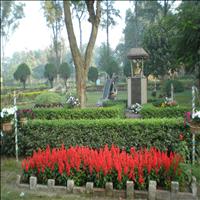 This town, a part of Kolkata's urban agglomeration, is 24 km north of Kolkata on the banks of River Ganga. Situated in the district of North 24 paraganas; famous for its waterways and wetlands, the only of its kind in India, the name Barrackpur comes from the barracks where troops have been stationed since 1772. This small township is famous for its Sepoy Mutiny of 1857 which triggered the 90 year old freedom struggle. A memorial to Mangal Pandey, the famous martyr hanged in Barrackpur's Latbagan, has been erected at Dhubighat. Another major attraction is the Gandhi Ghat, a memorial to Mahatma Gandhi stands in the form of the Gandhi Museum, built in 1966. \r\nNorth 24 Parganas, is also famous as the birth place of sage Loknath. Devotees flock to the temple in Chakladham dedicated to the sage. Kochua, nearby also has a temple dedicated to Loknath. \r\n
This town, a part of Kolkata's urban agglomeration, is 24 km north of Kolkata on the banks of River Ganga. Situated in the district of North 24 paraganas; famous for its waterways and wetlands, the only of its kind in India, the name Barrackpur comes from the barracks where troops have been stationed since 1772. This small township is famous for its Sepoy Mutiny of 1857 which triggered the 90 year old freedom struggle. A memorial to Mangal Pandey, the famous martyr hanged in Barrackpur's Latbagan, has been erected at Dhubighat. Another major attraction is the Gandhi Ghat, a memorial to Mahatma Gandhi stands in the form of the Gandhi Museum, built in 1966. \r\nNorth 24 Parganas, is also famous as the birth place of sage Loknath. Devotees flock to the temple in Chakladham dedicated to the sage. Kochua, nearby also has a temple dedicated to Loknath. \r\n In the twin city of Howrah, on the bank of River Hooghly, are the majestic Indian Botanical Gardens, spread over an area of 273 acres. The oldest and probably the biggest in the country, these gardens were established in July 1786 as a pleasure retreat for Colonel Kyd of the East India Company. Later it was developed by him for the collection of plants, indigenous to the country and for the introduction and acclimatization of plants from foreign lands. The star attraction is the 250-year old banyan tree with nearly 2,000 aerial roots, making it the largest tree of its kind in the world. Other notable botanical specimens are the double coconut tree from Sicily, the branching palm tree from Brazil, the multicoloured bamboo trees, the mad tree, various cacti and orchids. There is a huge lake, with a large variety of aquatic plants, including the rare Victoria Amazonica. Today this flora museum is a home to 35,000 types of fruits and flowers, besides 15,000 other botanical specimens, including medicinal plants. It also houses a library containing an invaluable collection of rare books on botany and allied subjects.
In the twin city of Howrah, on the bank of River Hooghly, are the majestic Indian Botanical Gardens, spread over an area of 273 acres. The oldest and probably the biggest in the country, these gardens were established in July 1786 as a pleasure retreat for Colonel Kyd of the East India Company. Later it was developed by him for the collection of plants, indigenous to the country and for the introduction and acclimatization of plants from foreign lands. The star attraction is the 250-year old banyan tree with nearly 2,000 aerial roots, making it the largest tree of its kind in the world. Other notable botanical specimens are the double coconut tree from Sicily, the branching palm tree from Brazil, the multicoloured bamboo trees, the mad tree, various cacti and orchids. There is a huge lake, with a large variety of aquatic plants, including the rare Victoria Amazonica. Today this flora museum is a home to 35,000 types of fruits and flowers, besides 15,000 other botanical specimens, including medicinal plants. It also houses a library containing an invaluable collection of rare books on botany and allied subjects. Established in 1875, and spread over nearly 100 acres in the heart of Kolkata are the Zoological Gardens. Inaugurated by the Prince of Wales in 1876, it is one of the oldest and the largest Zoos of India. There is a vast variety of animals present here in their most natural environments. Special attractions are the white tiger, the tigon (a cross between a tiger and a lion), the litigon (a cross between a lion and a tigon) and a tortoise that is much older than the zoo itself. Giraffes and Kangaroos, Monkeys and Hippos along with various birds and reptiles are also exhibited in the Zoo. It is one of the most famous picnic spot for the people of Kolkata. Across the road in front of the Zoo, one can visit the Aquarium housing various kinds of fishes and other aquatic animals.
Established in 1875, and spread over nearly 100 acres in the heart of Kolkata are the Zoological Gardens. Inaugurated by the Prince of Wales in 1876, it is one of the oldest and the largest Zoos of India. There is a vast variety of animals present here in their most natural environments. Special attractions are the white tiger, the tigon (a cross between a tiger and a lion), the litigon (a cross between a lion and a tigon) and a tortoise that is much older than the zoo itself. Giraffes and Kangaroos, Monkeys and Hippos along with various birds and reptiles are also exhibited in the Zoo. It is one of the most famous picnic spot for the people of Kolkata. Across the road in front of the Zoo, one can visit the Aquarium housing various kinds of fishes and other aquatic animals.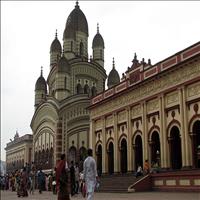 Dakshineswar Temple was founded on the 31st of May,1855;18 Jaistha 1262 b.s. The holy tithi was of Jagannath Deva Snanyatra. The Dakshineswar temple was founded on this auspicious day after facing many conflicts. The Rani Ma called by her people out of adoration, respect and love, installed Sri Jagadishwari Ma, the mother of the universe under the priesthood of Sri Rama Kumar Chattopadhaya .From young Gadadhar's coming to Dakshineshwar along with elder brother Rama Kumar to his transformation into the Avatar of the age, has become a legend now.
Dakshineswar Temple was founded on the 31st of May,1855;18 Jaistha 1262 b.s. The holy tithi was of Jagannath Deva Snanyatra. The Dakshineswar temple was founded on this auspicious day after facing many conflicts. The Rani Ma called by her people out of adoration, respect and love, installed Sri Jagadishwari Ma, the mother of the universe under the priesthood of Sri Rama Kumar Chattopadhaya .From young Gadadhar's coming to Dakshineshwar along with elder brother Rama Kumar to his transformation into the Avatar of the age, has become a legend now. B.B.D. Bagh formerly called Dalhousie Square, is the shortened version for Benoy-Badal-Dinesh Bagh .It is the seat of power of the state government, as well as the central business district in Kolkata in the Indian state of West Bengal.
B.B.D. Bagh formerly called Dalhousie Square, is the shortened version for Benoy-Badal-Dinesh Bagh .It is the seat of power of the state government, as well as the central business district in Kolkata in the Indian state of West Bengal.
BBD bag stands for Binoy Badal Dinesh who were the freedom fighters and killed Inspector General of Prisons, N.S. Simpson, in the balconies of Writers' building. Previously the square had been named after Lord Dalhousie, Governor General of India from 1847 to 1856.
B. B. D. Bagh is considered to be the 'heart' of Kolkata as many famous buildings housing important businesses and banks are located here.
A heritage building right in the heart of Dalhousie Square, Kolkata (PIN 700001) housing the General Post Office. This two-storied Victorian style building with an impressive dome is a key landmark for Kolkata. Earlier Fort William was situated here. A long strip of brass on the eastern staircase of GPO is the reminiscent of initial Fort William of Kolkata.
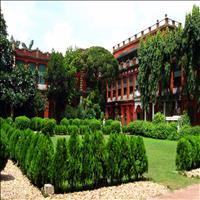 The Jorashanko Thakurbari which was the home of the Tagores from the end of the 18th century onwards and has now been converted into the Rabindra Bharati University. It was here that the great Indian poet and the Nobel Laureate, Rabindranath Tagore was born and lived. The Rabindra Bharati Museum housed within the University is a major repository of the works of the Tagores, especially of Abanindranath and Rabindranath. Jorashanko, takes its name from the original Jora Shankar, from the twin Shankar (Shiva) temples nearby.
The Jorashanko Thakurbari which was the home of the Tagores from the end of the 18th century onwards and has now been converted into the Rabindra Bharati University. It was here that the great Indian poet and the Nobel Laureate, Rabindranath Tagore was born and lived. The Rabindra Bharati Museum housed within the University is a major repository of the works of the Tagores, especially of Abanindranath and Rabindranath. Jorashanko, takes its name from the original Jora Shankar, from the twin Shankar (Shiva) temples nearby.Timings: 0900 - 1700 HRS
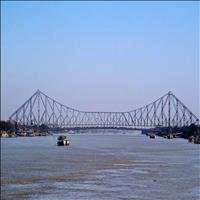 Howrah Bridge is a cantilever bridge with a suspended span over the Hooghly River in West Bengal, India. Commissioned in 1943, the bridge was originally named the New Howrah Bridge, because it replaced a pontoon bridge at the same location linking the two cities of Howrah and Kolkata (Calcutta). On 14 June 1965 it was renamed Rabindra Setu after the great Bengali poet Rabindranath Tagore, who was the first Indian and Asian Nobel laureate. It is still popularly known as the Howrah Bridge.
Howrah Bridge is a cantilever bridge with a suspended span over the Hooghly River in West Bengal, India. Commissioned in 1943, the bridge was originally named the New Howrah Bridge, because it replaced a pontoon bridge at the same location linking the two cities of Howrah and Kolkata (Calcutta). On 14 June 1965 it was renamed Rabindra Setu after the great Bengali poet Rabindranath Tagore, who was the first Indian and Asian Nobel laureate. It is still popularly known as the Howrah Bridge. Established in 1814, commonly known as 'Jadughar', the Indian Museum of Kolkata is the ninth oldest regular museum of the world. One of the biggest and oldest in Asia, it is the repository of the largest museum objects in India. The Museum has over sixty galleries of Art, Archaeology, Anthropology, Geology, Zoology and Botany sections, spreading over the vast 10,000 square feet area. It houses more than one million exhibits today. The structure of the building is built in Italian architectural style. The Archaeological Section displays stone-age artifacts from India and abroad, pre-historic antiquities from Mohenjodaro, Harappa. One of the rooms has a collection of meteorites. The museum also has a unique collection of fossils of prehistoric animals which includes a giant crocodile and a huge tortoise. Star attractions are a 4,000 year-old mummy and an enormous dinosaur skeleton. Also notable among the collection are 50,000 antique coins and precious stones. Priceless items such as Shah Jehan's emerald goblet and an urn containing Buddha's ashes are exhibited.
Established in 1814, commonly known as 'Jadughar', the Indian Museum of Kolkata is the ninth oldest regular museum of the world. One of the biggest and oldest in Asia, it is the repository of the largest museum objects in India. The Museum has over sixty galleries of Art, Archaeology, Anthropology, Geology, Zoology and Botany sections, spreading over the vast 10,000 square feet area. It houses more than one million exhibits today. The structure of the building is built in Italian architectural style. The Archaeological Section displays stone-age artifacts from India and abroad, pre-historic antiquities from Mohenjodaro, Harappa. One of the rooms has a collection of meteorites. The museum also has a unique collection of fossils of prehistoric animals which includes a giant crocodile and a huge tortoise. Star attractions are a 4,000 year-old mummy and an enormous dinosaur skeleton. Also notable among the collection are 50,000 antique coins and precious stones. Priceless items such as Shah Jehan's emerald goblet and an urn containing Buddha's ashes are exhibited.Closed On: Monday
Timings: 0900 - 1730 hrs
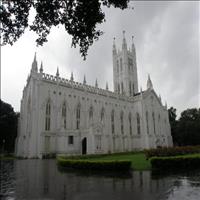 Built between 1839 and 1847, St Paul's Cathedral is one of India's most important churches. It's east of the Victoria Memorial at the South end of the Maidan. The steeple fell during an earthquake in 1897 and was redesigned and rebuilt. Inside there's some interesting memorials and stained glass, including the west window by Sir Edward Burne-Jones.
Built between 1839 and 1847, St Paul's Cathedral is one of India's most important churches. It's east of the Victoria Memorial at the South end of the Maidan. The steeple fell during an earthquake in 1897 and was redesigned and rebuilt. Inside there's some interesting memorials and stained glass, including the west window by Sir Edward Burne-Jones. Built in Italian Renaissance cum Saracenic style, Victoria Memorial was planned by Lord Curzon and opened by the Prince of Wales in 1921. This British attempt at building a second Taj Mahal, is dedicated to Queen Victoria and houses a fantastic collection of rare memorabilia from Colonial days. A light and sound show recreates history every evening
Built in Italian Renaissance cum Saracenic style, Victoria Memorial was planned by Lord Curzon and opened by the Prince of Wales in 1921. This British attempt at building a second Taj Mahal, is dedicated to Queen Victoria and houses a fantastic collection of rare memorabilia from Colonial days. A light and sound show recreates history every eveningClosed On: Monday
Timings: 1000 AM to 1700 PM
Remarks: All Mondays, Republic Day (26th January), Holi, Independence Day (15th August), Id-ul-Fitr, Gandhiji's Birthday, Dusserah, Id-ul-Juha, Christmas day (25th December).
Essence of India / PI-0453 (22 Days / 21 Nights)
Delhi-Jaipur-Agra-Orchha-Khajuraho-Varanasi-Patna-Vaishali-Patna-Kolkata-Chennai-Kanchipuram-Mamallapuram-Puducherry-Madurai-Thiruvananthapuram-Mumbai-Aurangabad-Mumbai
With some of the most interesting and intriguing attractions of India on platter, this Essence of India tour takes you across the most majestic architectural marvels that will leave you wanting for more. The tour showcases the rich history and culture of India with the imposing forts, amazing palaces and sumptuous regional fares that it covers during its whole duration.
Detailed Itinerary
Day 1 : Delhi
Day 2 : Delhi
Day 3 : Delhi - Jaipur
Day 4 : Jaipur - Agra
Day 5 : Agra - Orchha
Day 6 : Orchha - Khajuraho
Day 7 : Khajuraho
Day 8 : Khajuraho - Varanasi
Day 9 : Varanasi - Patna
Day 10 : Patna-Vaishali-Patna
Day 11 : Patna - Kolkata
Day 12 : Kolkata - Chennai
Day 13 : Chennai
Day 14 : Chennai - Kanchipuram - Mamallapuram
Day 15 : Mamallapuram - Puducherry
Day 16 : Puducherry
Day 17 : Puducherry - Madurai
Day 18 : Madurai-Thiruvananthapuram
Day 19 : Thiruvananthapuram-Mumbai-Aurangabad
Day 20 : Aurangabad
Day 21 : Aurangabad - Mumbai
Day 22 : Mumbai
Delhi-Jaipur-Agra-Orchha-Khajuraho-Varanasi-Patna-Vaishali-Patna-Kolkata-Chennai-Kanchipuram-Mamallapuram-Puducherry-Madurai-Thiruvananthapuram-Mumbai-Aurangabad-Mumbai
With some of the most interesting and intriguing attractions of India on platter, this Essence of India tour takes you across the most majestic architectural marvels that will leave you wanting for more. The tour showcases the rich history and culture of India with the imposing forts, amazing palaces and sumptuous regional fares that it covers during its whole duration.
Detailed Itinerary
Day 1 : Delhi
Day 2 : Delhi
Day 3 : Delhi - Jaipur
Day 4 : Jaipur - Agra
Day 5 : Agra - Orchha
Day 6 : Orchha - Khajuraho
Day 7 : Khajuraho
Day 8 : Khajuraho - Varanasi
Day 9 : Varanasi - Patna
Day 10 : Patna-Vaishali-Patna
Day 11 : Patna - Kolkata
Day 12 : Kolkata - Chennai
Day 13 : Chennai
Day 14 : Chennai - Kanchipuram - Mamallapuram
Day 15 : Mamallapuram - Puducherry
Day 16 : Puducherry
Day 17 : Puducherry - Madurai
Day 18 : Madurai-Thiruvananthapuram
Day 19 : Thiruvananthapuram-Mumbai-Aurangabad
Day 20 : Aurangabad
Day 21 : Aurangabad - Mumbai
Day 22 : Mumbai
Meghalaya Cultural Tour / PI-0504 (6 Days / 5 Nights)
Delhi-Kolkata-Guwahati-Shillong-Cherapunjee-Shillong-Umaim Lake-Guwahati-Delhi
Detailed Itinerary
Day 1 : Delhi-Kolkata
Day 2 : Guwahati - Shillong
Day 3 : Shillong
Day 4 : Shillong - Cherapunjee - Shillong
Day 5 : Shillong - Umaim Lake - Guwahati
Day 6 : Guwahati-Delhi
Delhi-Kolkata-Guwahati-Shillong-Cherapunjee-Shillong-Umaim Lake-Guwahati-Delhi
Detailed Itinerary
Day 1 : Delhi-Kolkata
Day 2 : Guwahati - Shillong
Day 3 : Shillong
Day 4 : Shillong - Cherapunjee - Shillong
Day 5 : Shillong - Umaim Lake - Guwahati
Day 6 : Guwahati-Delhi
Mountain Motorbike Tour of North East / PI-039 (14 Days / 13 Nights)
Kolkata-Tezpur-Kaziranga-Dibrugarh-Pasighat-Along-Daporijo-Ziro-Itanagar-Bomdila-Tawang-Bomdila-Tezpur-Kolkata
This Motorbike Safari in the remote North East sector of India will bring you closer to nature. Be it the Rhinos of Kaziranga National park, Tea plantations, Chang Bungalows, crossing the mighty Bramhaputra River or meeting the hill tribes of the North-East; at every corner the nature only comes closer to you. Arunachal Pradesh, where this Royal enfield motorcycle tour takes us is the north eastern tip of India and the begining of the torrential Bramhaputra River, classified in Hindu mythology as the only male river. We are proud to say that we extend our wings from the origin of the river in Tibet to the final stages of confluence points through our motorcycle adventures. The motorcycle ride will keep you occupied with a variety of wild life passing enroute - some rare species to be seen, identifying the remote hill tribes and learning their customs while enjoying the hospitality warmth from people yet untouched by the modern life. The evergreen forest ride on motorbike with some spectacular scenery enroute gives memories to be cherished forever! Approximately distance covered is 1700 kms.
Detailed Itinerary
Day 1 : Kolkata
Day 2 : Kolkata
Day 3 : Kolkata - Tezpur - Kaziranga
Day 4 : Kaziranga - Dibrugarh
Day 5 : Dibrugarh - Pasighat
Day 6 : Pasighat - Along
Day 7 : Along - Daporijo
Day 8 : Daporijo - Ziro
Day 9 : Ziro - Itanagar
Day 10 : Itanagar - Bomdila
Day 11 : Bomdila - Tawang
Day 12 : Tawang - Bomdila
Day 13 : Bomdila - Tezpur
Day 14 : Tezpur - Kolkata
Kolkata-Tezpur-Kaziranga-Dibrugarh-Pasighat-Along-Daporijo-Ziro-Itanagar-Bomdila-Tawang-Bomdila-Tezpur-Kolkata
This Motorbike Safari in the remote North East sector of India will bring you closer to nature. Be it the Rhinos of Kaziranga National park, Tea plantations, Chang Bungalows, crossing the mighty Bramhaputra River or meeting the hill tribes of the North-East; at every corner the nature only comes closer to you. Arunachal Pradesh, where this Royal enfield motorcycle tour takes us is the north eastern tip of India and the begining of the torrential Bramhaputra River, classified in Hindu mythology as the only male river. We are proud to say that we extend our wings from the origin of the river in Tibet to the final stages of confluence points through our motorcycle adventures. The motorcycle ride will keep you occupied with a variety of wild life passing enroute - some rare species to be seen, identifying the remote hill tribes and learning their customs while enjoying the hospitality warmth from people yet untouched by the modern life. The evergreen forest ride on motorbike with some spectacular scenery enroute gives memories to be cherished forever! Approximately distance covered is 1700 kms.
Detailed Itinerary
Day 1 : Kolkata
Day 2 : Kolkata
Day 3 : Kolkata - Tezpur - Kaziranga
Day 4 : Kaziranga - Dibrugarh
Day 5 : Dibrugarh - Pasighat
Day 6 : Pasighat - Along
Day 7 : Along - Daporijo
Day 8 : Daporijo - Ziro
Day 9 : Ziro - Itanagar
Day 10 : Itanagar - Bomdila
Day 11 : Bomdila - Tawang
Day 12 : Tawang - Bomdila
Day 13 : Bomdila - Tezpur
Day 14 : Tezpur - Kolkata
Skrenyi Festival of North East / PI-049 (16 Days / 15 Nights)
Kolkata-Dibrugarh-Mon-Longwa-Mon-Tuensang-Noklak-Tuensang-Mokokchung-Wokha-Tuphema-Kohima-Dimapur-Kolkata
Northeast of India... the mystic region, is the most bio - diverse regions of the world. A home to the beautiful landscapes, ancient temples, rich culture, mystical tribes and an array of flora and fauna, all these and more is what the Northeast region of India has to offer. The tribes here celebrate smallest of the occasions in the most vibrant ways, with songs and dance and other colourful activities. To witness one such festival is an opportunity one should not miss on. The festival dates change according to the Lunar Calendar. Generally it falls in the month of February.
Detailed Itinerary
Day 1 : Kolkata
Day 2 : Kolkata
Day 3 : Kolkata - Dibrugarh
Day 4 : Dibrugarh - Mon
Day 5 : Mon
Day 6 : Mon - Longwa - Mon
Day 7 : Mon - Tuensang
Day 8 : Tuensang - Noklak - Tuensang
Day 9 : Tuensang - Mokokchung
Day 10 : Mokokchung
Day 11 : Mokokchung - Wokha
Day 12 : Wokha - Tuphema
Day 13 : Tuphema
Day 14 : Tuphema
Day 15 : Tuphema - Kohima
Day 16 : Kohima - Dimapur - Kolkata
Kolkata-Dibrugarh-Mon-Longwa-Mon-Tuensang-Noklak-Tuensang-Mokokchung-Wokha-Tuphema-Kohima-Dimapur-Kolkata
Northeast of India... the mystic region, is the most bio - diverse regions of the world. A home to the beautiful landscapes, ancient temples, rich culture, mystical tribes and an array of flora and fauna, all these and more is what the Northeast region of India has to offer. The tribes here celebrate smallest of the occasions in the most vibrant ways, with songs and dance and other colourful activities. To witness one such festival is an opportunity one should not miss on. The festival dates change according to the Lunar Calendar. Generally it falls in the month of February.
Detailed Itinerary
Day 1 : Kolkata
Day 2 : Kolkata
Day 3 : Kolkata - Dibrugarh
Day 4 : Dibrugarh - Mon
Day 5 : Mon
Day 6 : Mon - Longwa - Mon
Day 7 : Mon - Tuensang
Day 8 : Tuensang - Noklak - Tuensang
Day 9 : Tuensang - Mokokchung
Day 10 : Mokokchung
Day 11 : Mokokchung - Wokha
Day 12 : Wokha - Tuphema
Day 13 : Tuphema
Day 14 : Tuphema
Day 15 : Tuphema - Kohima
Day 16 : Kohima - Dimapur - Kolkata
India Nepal Buddhist tour from Kolkata / PC-564 (11 Days / 10 Nights)
Kolkata-Gaya-Rajgir-Nalanda-Bodhgaya-Varanasi-Agra-Delhi-Kathmandu-Pokhra-Bhaktapur-Kathmandu
Starting from Kolkata, this trip is a Buddhist pilgrimage tour that takes you across some of the most revered Buddhsist spots in India Nepal area. Whether it’s the sacred Gaya or the historic Nalanda or the spiritual Varanasi or the revered Bhaktapur, the trip covers the spots that act as important landmarks in the Buddhist culture and tradition.
Detailed Itinerary
Day 1 : Kolkata
Day 2 : Kolkata-Gaya
Day 3 : Gaya-Rajgir-Nalanda-Bodhgaya
Day 4 : Bodhgaya-Varanasi
Day 5 : Varanasi-Agra
Day 6 : Agra
Day 7 : Agra-Delhi-Kathmandu
Day 8 : Kathmandu-Pokhra
Day 9 : Pokhra
Day 10 : Pokhra-Bhaktapur
Day 11 : Bhaktapur-Kathmandu
Kolkata-Gaya-Rajgir-Nalanda-Bodhgaya-Varanasi-Agra-Delhi-Kathmandu-Pokhra-Bhaktapur-Kathmandu
Starting from Kolkata, this trip is a Buddhist pilgrimage tour that takes you across some of the most revered Buddhsist spots in India Nepal area. Whether it’s the sacred Gaya or the historic Nalanda or the spiritual Varanasi or the revered Bhaktapur, the trip covers the spots that act as important landmarks in the Buddhist culture and tradition.
Detailed Itinerary
Day 1 : Kolkata
Day 2 : Kolkata-Gaya
Day 3 : Gaya-Rajgir-Nalanda-Bodhgaya
Day 4 : Bodhgaya-Varanasi
Day 5 : Varanasi-Agra
Day 6 : Agra
Day 7 : Agra-Delhi-Kathmandu
Day 8 : Kathmandu-Pokhra
Day 9 : Pokhra
Day 10 : Pokhra-Bhaktapur
Day 11 : Bhaktapur-Kathmandu
Cultural Tour of North by North East / PI-021 (16 Days / 15 Nights)
Delhi-Jaipur-Agra-Delhi-Dibrugarh-Tezu-Hayuling-Walong-Hayuling-Tezu-Roing-Dibrugarh-Kolkata
Get a wonderful introduction to India, visiting the all-popular Golden Triangle comprising Delhi - Agra and Jaipur of the North. Going farther towards east, experience the most unexploited natural beauty of India in the seven states of North East. North East is a place of magical beauty and bewildering diversity. With memories galore of the unexplored land, touch the largest city of India, Kolkata where the fusion of old and new with rich and poor is present.
Detailed Itinerary
Day 1 : Delhi
Day 2 : Delhi
Day 3 : Delhi - Jaipur
Day 4 : Jaipur - Agra
Day 5 : Agra
Day 6 : Delhi - Dibrugarh - Tezu
Day 7 : Tezu - Hayuling
Day 8 : Hayuling - Walong
Day 9 : Walong
Day 10 : Walong - Hayuling
Day 11 : Hayuling - Tezu
Day 12 : Tezu - Roing
Day 13 : Roing
Day 14 : Roing - Dibrugarh
Day 15 : Dibrugarh - Kolkata
Day 16 : Kolkata
Delhi-Jaipur-Agra-Delhi-Dibrugarh-Tezu-Hayuling-Walong-Hayuling-Tezu-Roing-Dibrugarh-Kolkata
Get a wonderful introduction to India, visiting the all-popular Golden Triangle comprising Delhi - Agra and Jaipur of the North. Going farther towards east, experience the most unexploited natural beauty of India in the seven states of North East. North East is a place of magical beauty and bewildering diversity. With memories galore of the unexplored land, touch the largest city of India, Kolkata where the fusion of old and new with rich and poor is present.
Detailed Itinerary
Day 1 : Delhi
Day 2 : Delhi
Day 3 : Delhi - Jaipur
Day 4 : Jaipur - Agra
Day 5 : Agra
Day 6 : Delhi - Dibrugarh - Tezu
Day 7 : Tezu - Hayuling
Day 8 : Hayuling - Walong
Day 9 : Walong
Day 10 : Walong - Hayuling
Day 11 : Hayuling - Tezu
Day 12 : Tezu - Roing
Day 13 : Roing
Day 14 : Roing - Dibrugarh
Day 15 : Dibrugarh - Kolkata
Day 16 : Kolkata
Cultural Tour of North East / PI-022 (13 Days / 12 Nights)
Kolkata-Dibrugarh-Pasighat-Along-Daporijo-Ziro-Itanagar-Tezpur-Guwahati-Kolkata
North East is a place of magical beauty and bewildering diversity. Dominated by the mighty rivers with myriad moods and habitat of the more than 165 tribes; northeast is an explorers', nature lovers' and adventure seekers' paradise. With memories galore of the unexplored land touch the largest city of India, Kolkata where the fusion of old and new with rich and poor is present. This city of Joy brings forth the beauty of the Ganges a stark difference from the mountains of the North East.
Detailed Itinerary
Day 1 : Kolkata
Day 2 : Kolkata
Day 3 : Dibrugarh - Pasighat
Day 4 : Pasighat - Along
Day 5 : Along
Day 6 : Along - Daporijo
Day 7 : Daporijo
Day 8 : Daporijo - Ziro
Day 9 : Ziro
Day 10 : Ziro - Itanagar
Day 11 : Itanagar
Day 12 : Itanagar - Tezpur
Day 13 : Tezpur - Guwahati-Kolkata
Kolkata-Dibrugarh-Pasighat-Along-Daporijo-Ziro-Itanagar-Tezpur-Guwahati-Kolkata
North East is a place of magical beauty and bewildering diversity. Dominated by the mighty rivers with myriad moods and habitat of the more than 165 tribes; northeast is an explorers', nature lovers' and adventure seekers' paradise. With memories galore of the unexplored land touch the largest city of India, Kolkata where the fusion of old and new with rich and poor is present. This city of Joy brings forth the beauty of the Ganges a stark difference from the mountains of the North East.
Detailed Itinerary
Day 1 : Kolkata
Day 2 : Kolkata
Day 3 : Dibrugarh - Pasighat
Day 4 : Pasighat - Along
Day 5 : Along
Day 6 : Along - Daporijo
Day 7 : Daporijo
Day 8 : Daporijo - Ziro
Day 9 : Ziro
Day 10 : Ziro - Itanagar
Day 11 : Itanagar
Day 12 : Itanagar - Tezpur
Day 13 : Tezpur - Guwahati-Kolkata
Sandakphu Singalila Ridge Trek - II / PI-0251 (13 Days / 12 Nights)
Delhi-Darjeeling-Manebhanjang-Tonglu-Gairibas-Kalipokhari-Sandakphu-Phalut-Ramam-Rimbik-Darjeeling-Kolkata
Best Time : Oct - April
Detailed Itinerary
Day 1 : Delhi
Day 2 : Delhi
Day 3 : Delhi-Darjeeling
Day 4 : Darjeeling
Day 5 : Darjeeling -Manebhanjang - Tonglu
Day 6 : Tonglu -Gairibas -Kalipokhari
Day 7 : Kalipokhari - Sandakphu
Day 8 : Sandakphu - Phalut
Day 9 : Phalut
Day 10 : Phalut - Ramam
Day 11 : Ramam - Rimbik
Day 12 : Rimbik - Darjeeling
Day 13 : Darjeeling-Kolkata
Delhi-Darjeeling-Manebhanjang-Tonglu-Gairibas-Kalipokhari-Sandakphu-Phalut-Ramam-Rimbik-Darjeeling-Kolkata
Best Time : Oct - April
Detailed Itinerary
Day 1 : Delhi
Day 2 : Delhi
Day 3 : Delhi-Darjeeling
Day 4 : Darjeeling
Day 5 : Darjeeling -Manebhanjang - Tonglu
Day 6 : Tonglu -Gairibas -Kalipokhari
Day 7 : Kalipokhari - Sandakphu
Day 8 : Sandakphu - Phalut
Day 9 : Phalut
Day 10 : Phalut - Ramam
Day 11 : Ramam - Rimbik
Day 12 : Rimbik - Darjeeling
Day 13 : Darjeeling-Kolkata
In the Footsteps of Buddha / PI-030 (7 Days / 6 Nights)
Delhi-Varanasi-Kushinagar-Vaishali-Patna-Nalanda-Rajgir-Bodhgaya-Kolkata
An amazing fable often heard? of a wealthy prince, who left all the luxuries of life in search of the ultimate truth; he returned as an enlightened one and his preaching became the fastest widespread religions of the world. Walk along the way the Lord did, centuries ago, practicing philosophy of life, which He preached. A journey of self-realization and self-emancipation.
Detailed Itinerary
Day 1 : Delhi
Day 2 : Delhi - Varanasi
Day 3 : Varanasi - Kushinagar
Day 4 : Kushinagar - Vaishali - Patna
Day 5 : Patna - Nalanda - Rajgir - Bodhgaya
Day 6 : Bodhgaya - Kolkata
Day 7 : Kolkata
Delhi-Varanasi-Kushinagar-Vaishali-Patna-Nalanda-Rajgir-Bodhgaya-Kolkata
An amazing fable often heard? of a wealthy prince, who left all the luxuries of life in search of the ultimate truth; he returned as an enlightened one and his preaching became the fastest widespread religions of the world. Walk along the way the Lord did, centuries ago, practicing philosophy of life, which He preached. A journey of self-realization and self-emancipation.
Detailed Itinerary
Day 1 : Delhi
Day 2 : Delhi - Varanasi
Day 3 : Varanasi - Kushinagar
Day 4 : Kushinagar - Vaishali - Patna
Day 5 : Patna - Nalanda - Rajgir - Bodhgaya
Day 6 : Bodhgaya - Kolkata
Day 7 : Kolkata
Sikkim / PI-0411 (18 Days / 17 Nights)
Kolkata-Bagdogra-Pelling-Uttarey-Uttrey-Chewa-Dhud-Dhor-Sikkim Megu-Parey Megu-Garakhet Megu-Parey Megu/Gararkhet-Dafey Bhir Meadow-Gomathang-Gomuthang-Baktok-Boktok-Pangden-Dzongri-Bakhim-Yuksom-Gangtok-Darjeeling-Bagdogra-Kolkata
Detailed Itinerary
Day 1 : Kolkata
Day 2 : Kolkata-Bagdogra-Pelling
Day 3 : Pelling - Uttarey
Day 4 : Uttrey - Chewa
Day 5 : Chewa - Dhud
Day 6 : Dhor - Sikkim Megu
Day 7 : Sikkim Megu - Parey Megu - Garakhet Megu
Day 8 : Parey Megu/Gararkhet - Dafey Bhir Meadow - Gomathang
Day 9 : Gomuthang - Baktok
Day 10 : Boktok - Pangden
Day 11 : Pangden - Dzongri
Day 12 : Dzongri - Bakhim
Day 13 : Bakhim - Yuksom
Day 14 : Yuksom - Gangtok
Day 15 : Gangtok
Day 16 : Gangtok - Darjeeling
Day 17 : Darjeeling
Day 18 : Darjeeling - Bagdogra - Kolkata
Kolkata-Bagdogra-Pelling-Uttarey-Uttrey-Chewa-Dhud-Dhor-Sikkim Megu-Parey Megu-Garakhet Megu-Parey Megu/Gararkhet-Dafey Bhir Meadow-Gomathang-Gomuthang-Baktok-Boktok-Pangden-Dzongri-Bakhim-Yuksom-Gangtok-Darjeeling-Bagdogra-Kolkata
Detailed Itinerary
Day 1 : Kolkata
Day 2 : Kolkata-Bagdogra-Pelling
Day 3 : Pelling - Uttarey
Day 4 : Uttrey - Chewa
Day 5 : Chewa - Dhud
Day 6 : Dhor - Sikkim Megu
Day 7 : Sikkim Megu - Parey Megu - Garakhet Megu
Day 8 : Parey Megu/Gararkhet - Dafey Bhir Meadow - Gomathang
Day 9 : Gomuthang - Baktok
Day 10 : Boktok - Pangden
Day 11 : Pangden - Dzongri
Day 12 : Dzongri - Bakhim
Day 13 : Bakhim - Yuksom
Day 14 : Yuksom - Gangtok
Day 15 : Gangtok
Day 16 : Gangtok - Darjeeling
Day 17 : Darjeeling
Day 18 : Darjeeling - Bagdogra - Kolkata
Kolkata, India Tours

